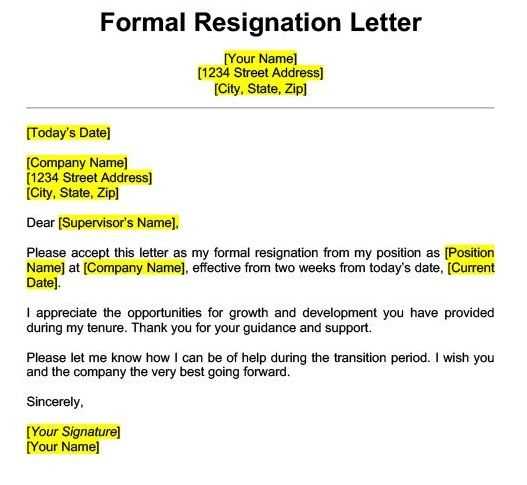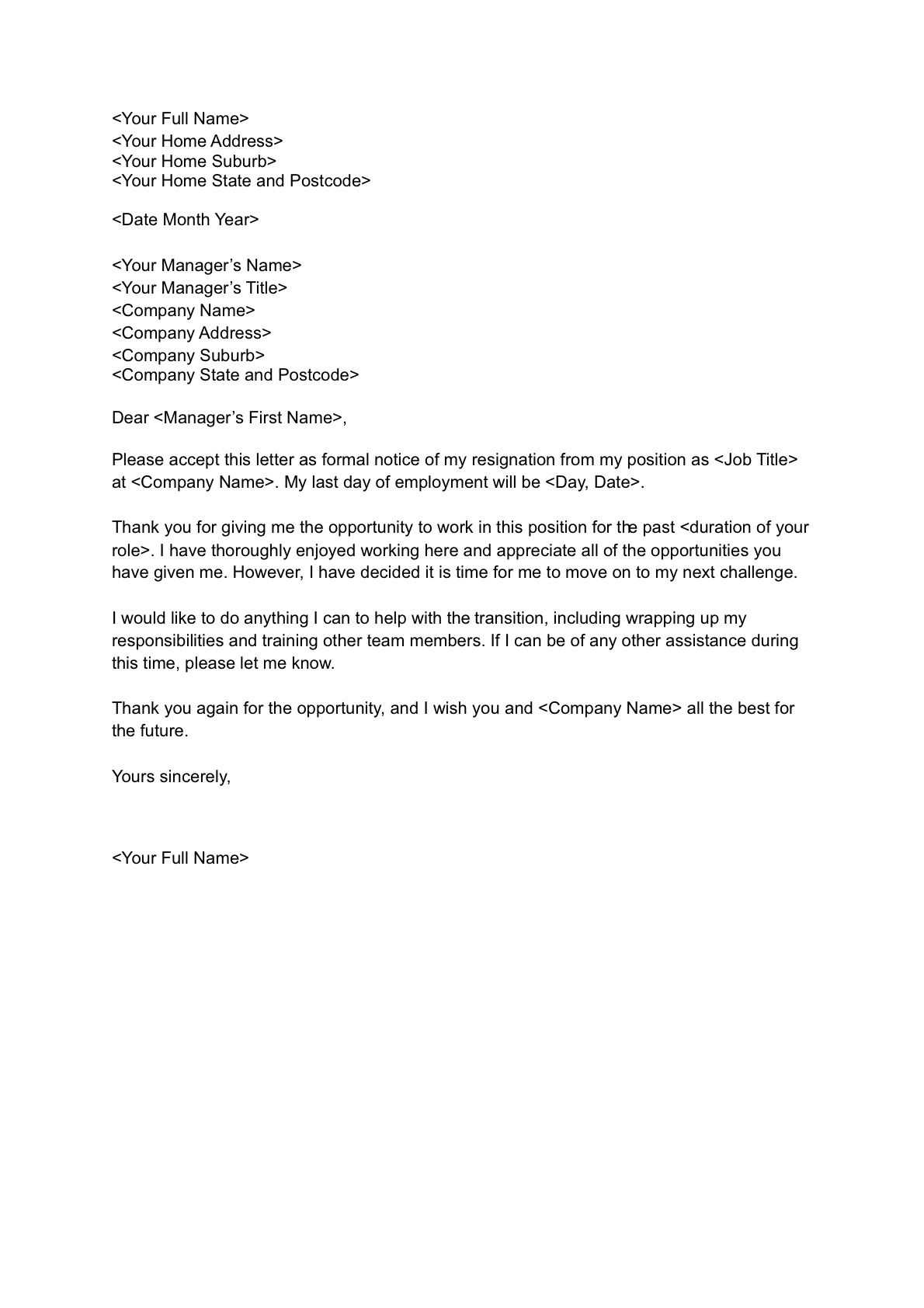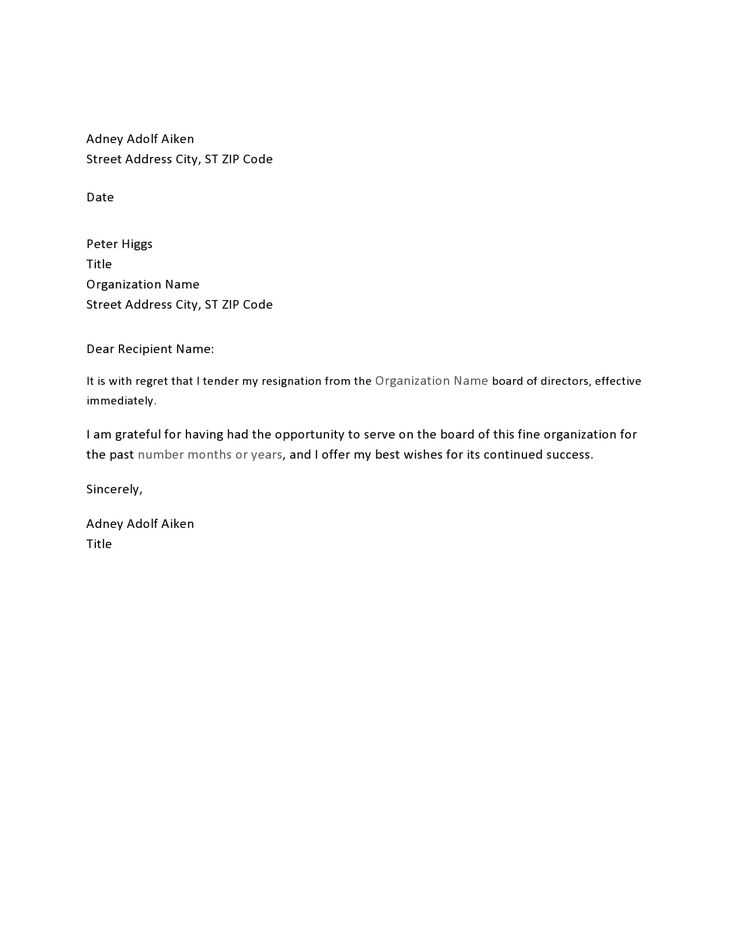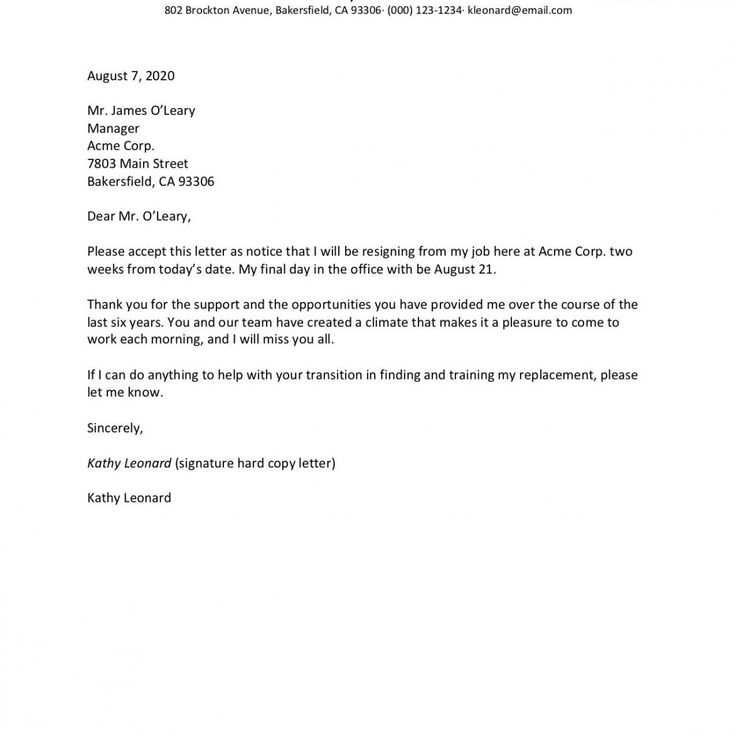Best Resignation Letter Template for a Professional Exit

Leaving a job can be a challenging yet necessary step in one’s career. A formal communication to your employer is essential to ensure a smooth transition and to maintain a positive relationship. Crafting a concise and respectful statement is key to leaving on good terms. In this guide, we explore the most effective ways to convey your decision, emphasizing professionalism and clarity.
Key Aspects of an Effective Exit Message
When composing a notice of departure, it’s important to focus on clarity and respect. The tone should be courteous, and the content should be straightforward, providing the necessary details without over-explaining. Here are the main points to include:
- Clear intention: State your purpose clearly at the beginning.
- Gratitude: Express thanks for the opportunity to work with the organization.
- Transition assistance: Offer support in making the handover process smooth.
How to Phrase Your Exit Notification

While the structure may vary, the language used should remain consistent with a professional tone. Here are some examples of phrases to consider when drafting your message:
- Direct Approach: “I would like to inform you that I will be stepping down from my position as [Job Title] effective [Date].”
- Grateful Approach: “I am sincerely grateful for the opportunity to work with [Company Name], and I appreciate the experiences gained during my time here.”
- Supportive Closing: “I am happy to assist in any way I can to ensure a seamless transition during my final days.”
Avoiding Common Pitfalls
To ensure that your communication is well-received, avoid the following errors:
- Over-explaining: Keep your message concise and to the point.
- Negativity: Avoid discussing personal grievances or reasons for leaving.
- Leaving loose ends: Offer concrete details about how you plan to help during the transition.
Examples of Polished Exit Communications
Here are a few polished examples of how to write a formal exit note that is respectful and professional:
- Example 1: “I am writing to inform you of my decision to move on from my role as [Job Title], effective [Date]. I want to express my gratitude for the support and opportunities during my time with [Company Name]. Please let me know how I can assist in the transition process.”
- Example 2: “After careful consideration, I have decided to resign from my position with [Company Name]. It has been a pleasure working with you, and I truly appreciate the experiences I have gained. I will do everything I can to make this transition as smooth as possible.”
Remember, the goal is to communicate your departure in a clear and professional manner, ensuring a positive conclusion to your employment while preserving valuable relationships.
Choosing the Right Format for Professional Departure
Key Components of a Proper Farewell Notice
How to Craft a Courteous Exit Communication
Common Pitfalls in Writing an Exit Message
Examples of Well-Written Farewell Notes
Timing Your Formal Departure Notification
When it comes to informing your employer about leaving a job, presenting your decision clearly and professionally is essential. The format you choose plays a key role in how the message is received. A well-structured communication ensures that your intent is understood and that you leave a positive impression. Below are the key aspects to consider when drafting a formal departure message.
Key Components of a Professional Farewell Notice

To ensure that your departure is communicated effectively, there are a few important elements to include. First, state your decision clearly at the start. Follow this by expressing gratitude for the opportunity you’ve had with the company. Finally, offer to assist in the transition process to make your exit as smooth as possible for both parties.
How to Craft a Courteous Exit Communication
A polite and thoughtful approach to writing your farewell note will reflect positively on you. Focus on expressing your appreciation for your time at the company and avoid negativity. Acknowledge the valuable experiences and relationships you’ve gained, and remain respectful even if you are leaving due to personal or professional differences.
Common Pitfalls in Writing an Exit Message
There are several mistakes to avoid when drafting your departure notice. Don’t over-explain your reasons for leaving–keep it professional and concise. Avoid sounding negative or resentful, as this could impact your reputation. Lastly, ensure that your message is clear and to the point to prevent misunderstandings.
Examples of Well-Written Farewell Notes

Here are a few examples of how to structure a formal and respectful communication:
- “I am writing to inform you that I will be leaving my position as [Job Title] on [Date]. I have greatly appreciated my time at [Company Name] and am thankful for the opportunities provided.”
- “After much consideration, I have decided to step away from my role at [Company Name]. It has been an incredible experience, and I appreciate all the support during my tenure.”
Timing Your Formal Departure Notification
Timing is crucial when submitting your departure notice. Ideally, provide at least two weeks’ notice to give your employer enough time to find a replacement or manage the transition. Make sure to send your communication at an appropriate time, ensuring that you don’t disrupt any ongoing projects or create unnecessary urgency for your employer.